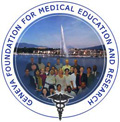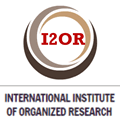Trombolisis en la enfermedad cerebrovascular
Palabras clave:
accidente cerebrovascular, asistencia médica, terapia trombolíticaResumen
El ictus isquémico es la primera causa de invalidez y la tercera de muerte en la sociedad moderna. El resultado final tras un ictus depende de la celeridad y la calidad del tratamiento, que se inicia al aplicar las estrategias para reducir la demora, tanto extra como intrahospitalaria, en la asistencia médica. La asistencia incluye la estabilización del paciente, con especial atención al mantenimiento de la vía aérea, y el manejo de la presión arterial y del ritmo cardíaco. La evaluación inicial debe ser rápida y estar enfocada al diagnóstico diferencial, la estimación del volumen y la localización del infarto, así como a la consideración de terapias. Entre ellas, la única aprobada hasta el momento, es la trombolisis con plasminógeno tisular recombinante intravenoso o arterial en pacientes seleccionados y con un curso clínico de menos de tres horas de duración.Descargas
Cómo citar
Número
Sección
Licencia
Aquellos autores/as que tengan publicaciones con esta revista, aceptan los términos siguientes:
- Los autores/as conservarán sus derechos de autor y ceden a la revista el derecho de primera publicación de su obra, el cuál estará simultáneamente sujeto a una licencia Creative Commons Atribución/Reconocimiento-NoComercial 4.0 Internacional — CC BY-NC 4.0 que permite a terceros compartir la obra siempre que se indique su autor y su primera publicación esta revista.
- Los autores/as podrán adoptar otros acuerdos de licencia no exclusiva de distribución de la versión de la obra publicada (p. ej.: depositarla en un repositorio institucional o publicarla en un volumen monográfico) siempre que se indique la publicación inicial en esta revista.
- Se permite y recomienda a los autores/as difundir su obra a través de Internet (p. ej.: en archivos telemáticos institucionales o en su página web) antes y durante el proceso de envío, lo cual puede producir intercambios interesantes y aumentar las citas de la obra publicada. (Véase El efecto del acceso abierto).





 1 diciembre del 2025
1 diciembre del 2025


